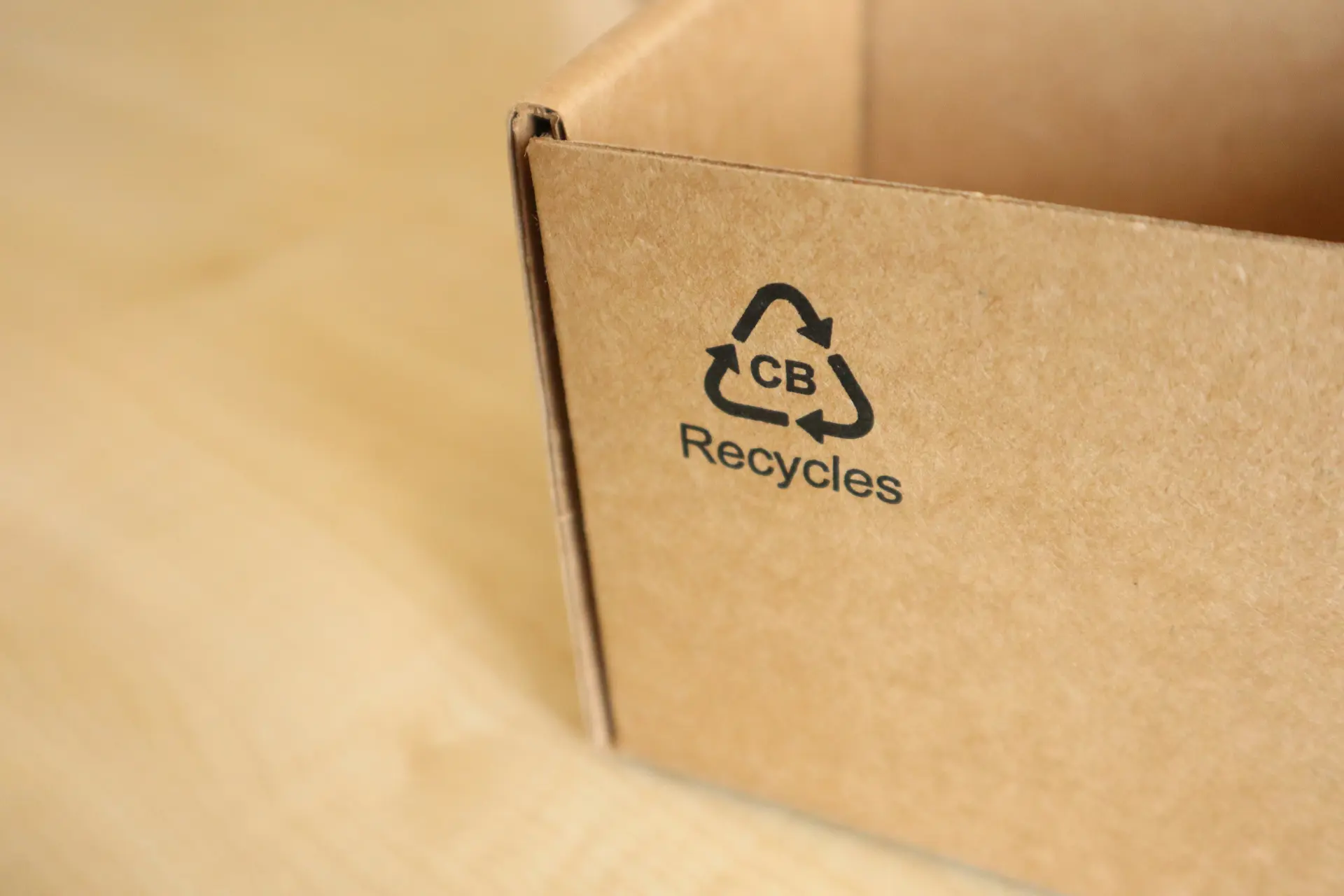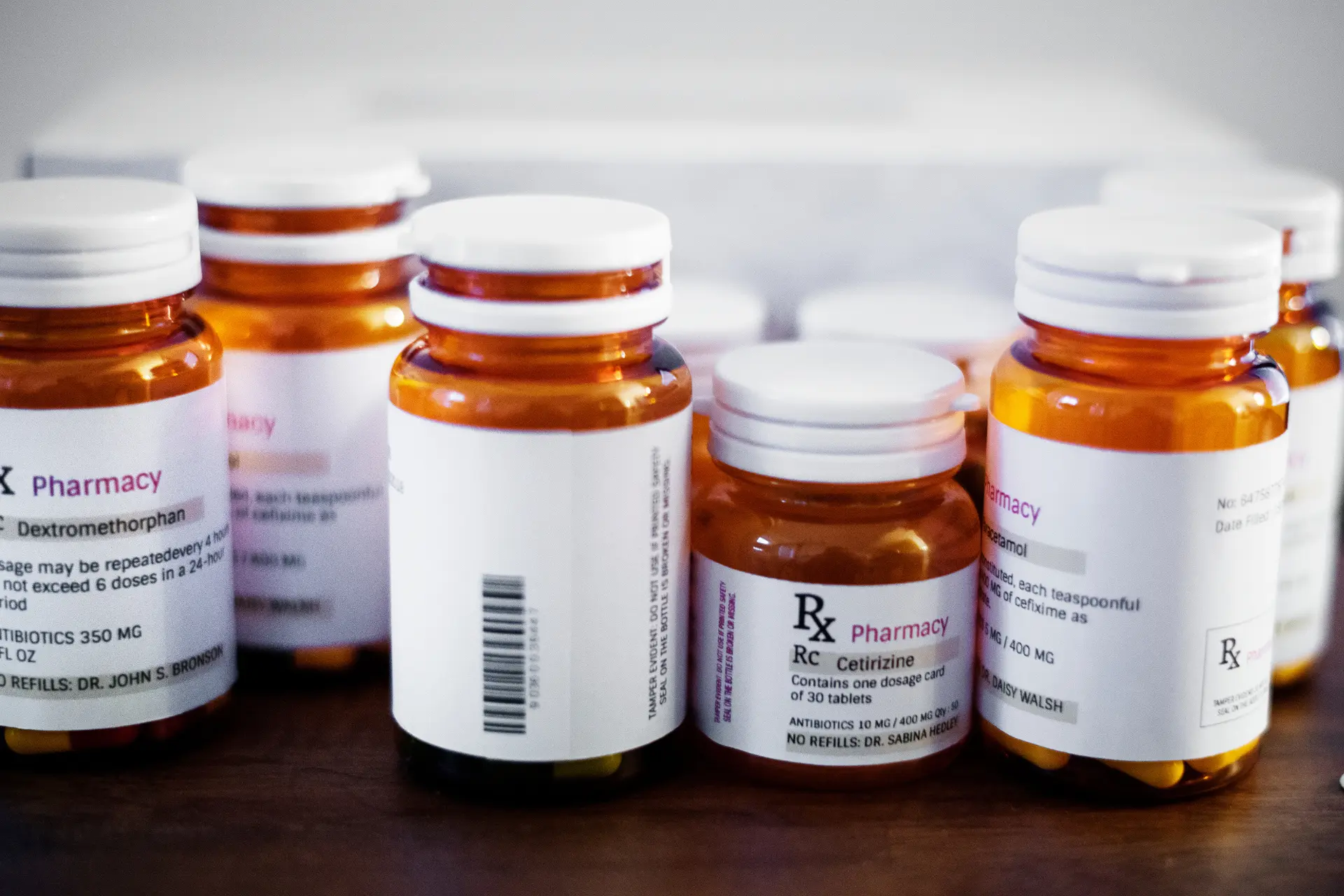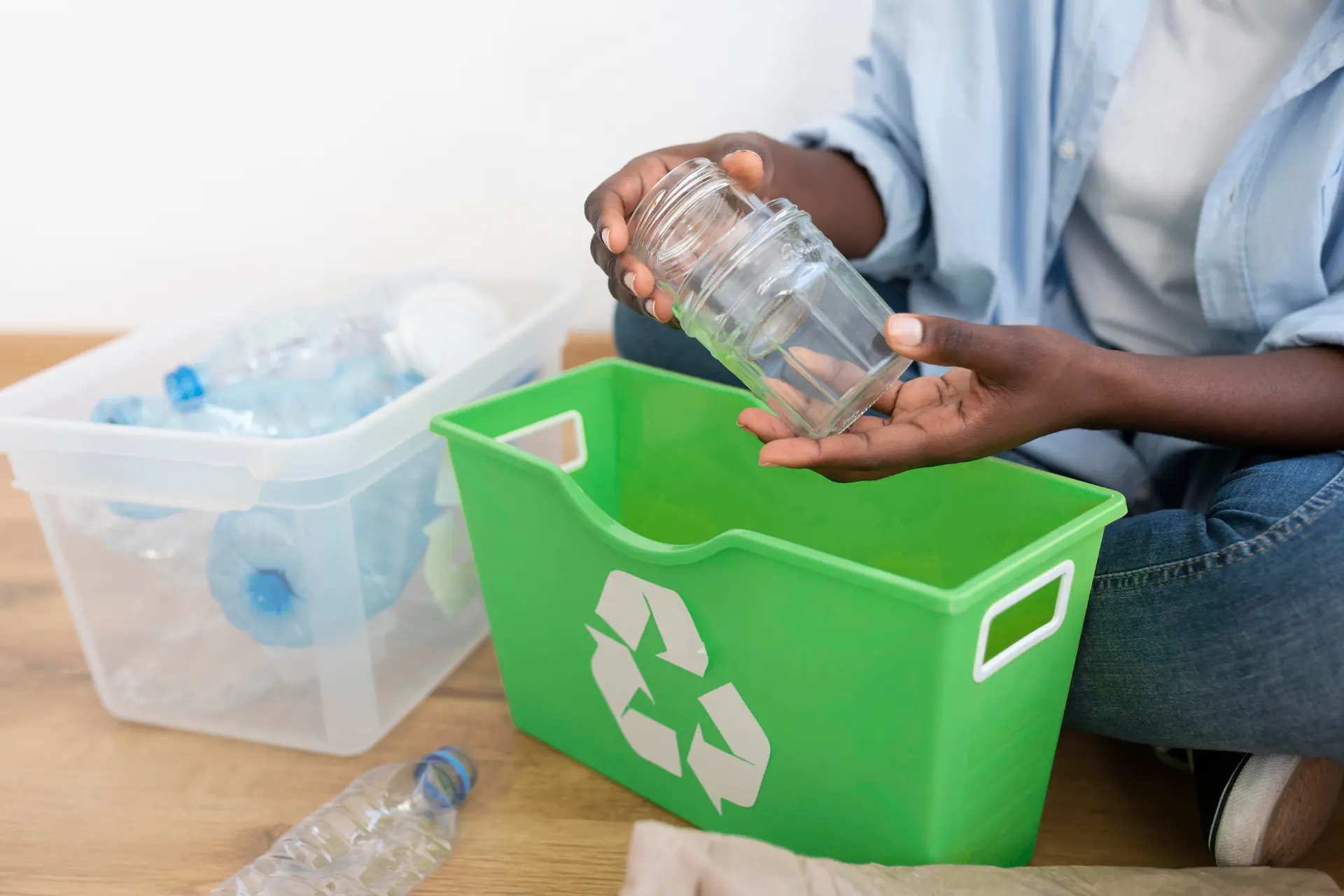What Are Recycling Symbols?
Recycling symbols are small, widely recognised icons printed on packaging to tell consumers how to dispose of a product responsibly. They show whether the packaging can be recycled, needs to be returned to a collection point, or must go in general waste. These symbols help bridge the gap between sustainability policies and practical consumer behaviour.
For UK businesses, recycling symbols are more than a visual cue. They are an important part of packaging compliance, showing that your organisation is meeting legal requirements and environmental commitments. When used correctly, recycling labels provide clarity for consumers and ensure that recyclable materials are processed effectively.
In today’s environmentally conscious market, packaging decisions are align closely with brand values. Consumers are quick to notice whether a company’s sustainability claims are supported by clear recycling information. Using the correct symbols not only supports the environment but also builds brand trust and credibility.
Why Recycling Symbols Matter for UK Businesses
In the UK, clear and consistent recycling labels have become a business necessity. Retailers and regulators now expect companies to display correct disposal information on every product. The labels help consumers recycle more effectively and contribute to national targets for waste reduction.
Recycling symbols also support compliance with legislation such as the Extended Producer Responsibility (EPR) scheme and the Packaging Waste Regulations. Businesses that fail to provide accurate labelling risk regulatory action, fines, or reputational damage.
From a consumer perspective, packaging is often the first and last point of interaction with a product. A clear recycling message can influence purchasing decisions and reinforce a company’s environmental credibility. Accurate, simple labels demonstrate that your business takes sustainability seriously and helps reduce confusion across the recycling system.
The Main Types of Recycling Symbols in the UK
The Mobius Loop
The Mobius Loop is one of the most recognised recycling icons worldwide. It shows three arrows arranged in a triangle, symbolising the process of recycling — collection, reprocessing, and reuse. When printed on packaging, it means the material is capable of being recycled, although it does not guarantee that all local authorities can accept it.
If a percentage figure appears inside the symbol, it indicates how much of the packaging has been made from recycled content. For instance, “75% recycled material” tells consumers that most of the packaging has been reused, helping businesses communicate sustainability achievements transparently.
The OPRL Label System
The On-Pack Recycling Label (OPRL) system is the official recycling guidance used across the UK. Developed to make recycling simpler, OPRL uses clear, consumer-friendly wording such as “Recycle,” “Don’t Recycle,” or “Return to Store.”
This system removes confusion and ensures that consumers receive accurate instructions based on actual recycling infrastructure. For businesses, using OPRL labels shows that you are aligned with national recycling standards and helping consumers make informed choices.
Many retailers now require suppliers to include OPRL labels on all packaging to maintain consistency across product ranges.
The Green Dot
The Green Dot is often seen on international packaging, especially for brands sold across Europe. It indicates that the producer has contributed financially to recycling schemes in certain countries. However, in the UK it does not mean that the packaging is recyclable.
For UK businesses, the Green Dot can create confusion if used alongside OPRL labels. It is generally recommended to prioritise the OPRL system for clarity and compliance with UK recycling expectations.
Plastic Resin Identification Codes
Plastic resin codes are the small numbers (1 to 7) displayed inside a triangle of arrows on plastic packaging. These numbers identify the type of plastic used. While primarily intended for recycling facilities, they also help packaging designers and manufacturers select materials responsibly.
Examples include:
- 1 (PET): Commonly used for soft drink and water bottles. Widely recycled across the UK.
- 2 (HDPE): Found in milk bottles and cleaning products. Easily recyclable.
- 4 (LDPE): Used for plastic bags and some film packaging. Often needs to be returned to store.
- 5 (PP): Found in yoghurt pots and straws. Recyclable in some areas.
- 6 (PS): Polystyrene, rarely recyclable.
Understanding these codes is vital when creating packaging that aligns with both recyclability goals and material performance.
Compostable, Biodegradable and Recyclable Marks
Many companies use terms such as “compostable,” “biodegradable,” or “recyclable,” but these terms mean different things.
- Compostable packaging breaks down into non-toxic, natural materials under industrial composting conditions.
- Biodegradable packaging will eventually break down through natural processes but may leave residues or take a long time.
- Recyclable packaging can be reprocessed into new materials or products.
Using the wrong terminology can mislead consumers and breach the Competition and Markets Authority (CMA) Green Claims Code. Every environmental claim must be backed by solid evidence, ensuring that packaging labels are honest and transparent.
Understanding the OPRL System in Detail
How the OPRL Scheme Works
The OPRL scheme was designed to make recycling information consistent across all UK packaging. Managed by OPRL Ltd, the programme helps businesses choose the correct label based on how widely materials are collected and reprocessed.
Members use a digital tool to check whether their packaging materials meet the criteria for recycling. Once confirmed, they can apply the appropriate label to their artwork. This ensures that the recycling guidance consumers see reflects real-world capabilities rather than assumptions.
For example, flexible plastics may not be collected at kerbside but can be recycled via supermarket collection points. In such cases, the correct label would be “Return to Store.”
The New OPRL Rules and Categories
The OPRL system now uses three clear categories that simplify recycling information:
- Recycle: The material is collected and processed by most local authorities.
- Don’t Recycle: The material is not widely collected and should go into general waste.
- Return to Store: Applicable to flexible plastics that can be recycled at participating stores.
This three-tiered system eliminates ambiguity and ensures consumers receive clear, actionable advice.
OPRL and UK Plastic Packaging Regulations
The OPRL system supports compliance with the UK’s evolving packaging and waste regulations, including EPR reforms. Under EPR, producers are responsible for the full lifecycle of their packaging, from design to disposal.
Displaying accurate OPRL labels helps meet these obligations and demonstrates that your business is providing consumers with reliable recycling information. Using the system also reduces the risk of fines or the need for costly packaging redesigns later.
How to Apply OPRL Correctly on Your Packaging
Correct application is essential to maintain compliance. Businesses should ensure that OPRL labels are:
- Positioned in a visible area, usually on the back or underside of the pack.
- Printed large enough to read clearly.
- Shown in contrasting colours to improve legibility.
- Applied consistently across all product lines, including promotional packaging.
Always ensure that the final label artwork is reviewed and approved by both design and compliance teams before going to print.
Regulatory Context and Compliance of Recycling Symbols
The Role of Extended Producer Responsibility (EPR)
EPR legislation is transforming packaging compliance in the UK. It makes producers financially responsible for the collection, sorting, and recycling of their packaging waste. Businesses must report detailed data about packaging materials, formats, and volumes placed on the market.
Accurate recycling labels play a vital role in this process. They support consumer behaviour, simplify waste categorisation, and demonstrate that your company is managing packaging responsibly.
Government Recycling Targets and UK Legislation
The UK government has set ambitious recycling targets, including achieving a 65% recycling rate for municipal waste by 2035. Businesses are expected to play a leading role in meeting this target by improving packaging design and ensuring clear disposal instructions.
Legislation such as the Packaging Waste Regulations 2007 and EPR reforms require accurate labelling and data reporting. Non-compliance can result in financial penalties and loss of retailer partnerships.
Penalties and Risks of Non-Compliance
Incorrect or missing recycling labels can lead to serious issues for businesses. Penalties may include:
- Fines for breaching labelling regulations.
- Costly re-labelling exercises.
- Withdrawal of non-compliant products from shelves.
- Loss of consumer trust and damage to brand reputation.
By using accurate, consistent recycling symbols and maintaining a robust approval process, you can safeguard your business from unnecessary risk.
Common Mistakes and Best Practices Around Recycling Symbols
Misleading or Incorrect Symbols
One of the most common mistakes businesses make is using outdated or misleading symbols. For instance, some use the Green Dot to imply recyclability, even though it only represents financial contribution in some countries. Others combine multiple conflicting symbols that confuse consumers.
Always verify which symbols apply to your materials and markets before finalising packaging designs.
Designing for Clarity and Consumer Understanding
Recycling labels should be simple, visible, and easy to interpret. Use clear typography, adequate colour contrast, and consistent placement. Avoid cluttering the design with unnecessary text.
Consumers are far more likely to recycle correctly when the instructions are clear and easy to follow. This improves recycling rates and enhances brand reputation for environmental responsibility.
Coordinating Across Suppliers and Teams
Packaging design involves multiple stakeholders, from marketing and design to compliance and supply chain. Without central coordination, errors can occur.
Digital tools such as 4Pack allow all teams to collaborate within one system. Feedback, artwork versions, and approvals can be tracked in real time, reducing confusion and eliminating duplication of effort.
How Digital Artwork Management Simplifies Recycling Label Compliance
The Challenge of Manual Label Management
Many businesses still rely on manual processes to manage packaging artwork, using email threads and spreadsheets to approve designs. This creates inefficiency and increases the risk of using outdated recycling symbols or missing regulatory updates.
When regulations or recycling guidance change, businesses may struggle to update every product version quickly. The result is inconsistency across packaging lines and potential compliance breaches.
Benefits of Digital Systems for On-Pack Labelling
Digital artwork management systems bring every packaging asset, label, and approval into one central platform. The advantages include:
- Complete traceability of all artwork versions.
- Automatic version control to prevent outdated files from being used.
- Fast, structured approval workflows involving multiple departments.
- Reduction in rework, delays, and compliance risks.
By using a digital platform, you can ensure every label remains up to date and compliant with the latest OPRL and EPR standards.
Why Choose 4Pack for Recycling Label Management
Centralised Artwork and Data Control
4Pack provides a unified platform where all your packaging artwork and recycling symbols are stored, managed, and approved. Every stakeholder has access to the most current version, removing confusion and ensuring accuracy from concept to print.
Automated Version Tracking and Approvals
4Pack automatically records every artwork change, approval, and comment. This ensures full visibility and accountability throughout your packaging process. You will always know which version is approved, who signed it off, and when it was finalised.
Collaboration Across Teams and Suppliers
The platform connects internal teams, external partners, and suppliers in a single workspace. Everyone can view, annotate, and approve artwork in real time. This eliminates long email chains and prevents miscommunication between departments.
Stay Aligned with OPRL and EPR Requirements
4Pack helps you maintain ongoing compliance by ensuring every label reflects current OPRL standards and EPR obligations. The system simplifies updates and provides a reliable audit trail, giving you peace of mind that your packaging meets UK regulations.
Book a Demo with 4Pack
If your business wants to simplify recycling label management, improve accuracy, and save time, book a demo with 4Pack today.
See firsthand how our platform can centralise your packaging artwork, streamline approvals, and keep your recycling symbols fully compliant with UK legislation.
Takeaway
Recycling labels are a vital part of modern packaging design. They guide consumers, demonstrate corporate responsibility, and ensure businesses meet their legal and environmental obligations. For UK companies, accurate and compliant recycling symbols are no longer optional – they are an essential part of packaging compliance and brand integrity.
By adopting a digital artwork management system like 4Pack, you can simplify the entire process. From version control and approvals to regulatory updates, 4Pack ensures your packaging remains accurate, consistent, and compliant.
Take control of your recycling labelling today.
Book a demo with 4Pack and see how you can save time, reduce risk, and support a more sustainable future for your business.



